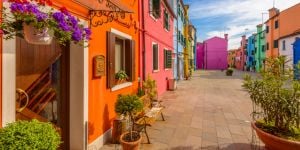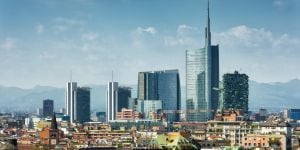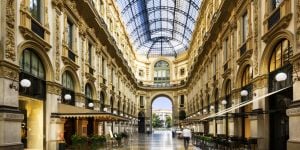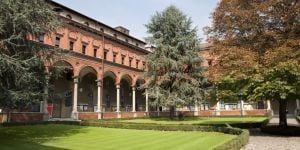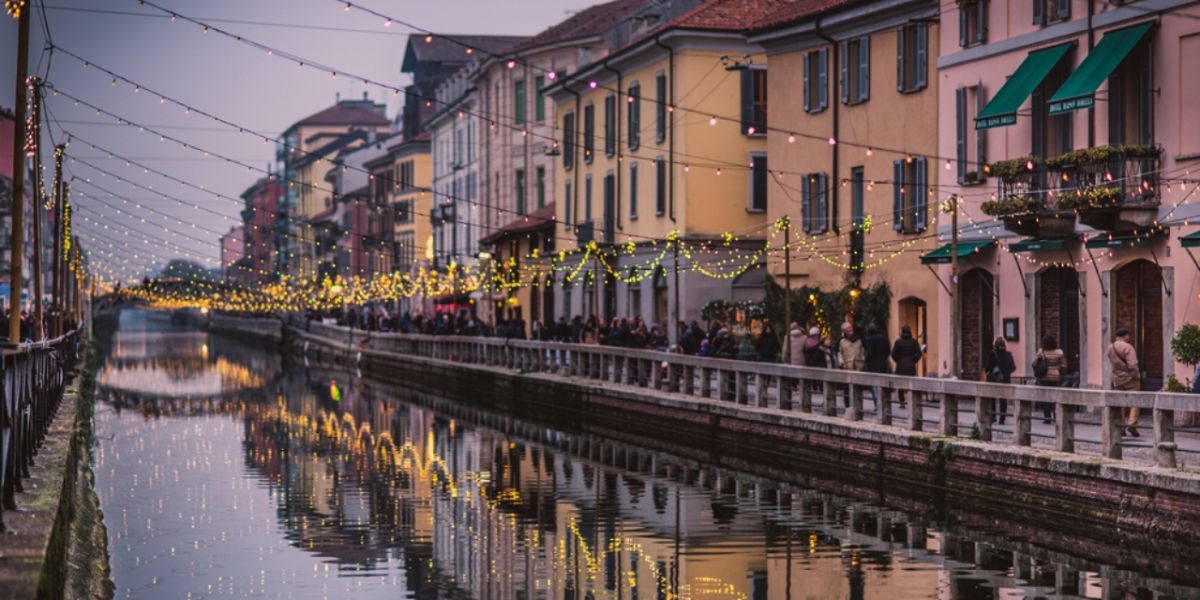
Milan is one of the world's fashion capitals and, as Italy's most important industrial and financial center, the city attracts people like no other. This popularity can be a challenge for workers and expatriates looking for accommodation for a medium or long stay or for tourists on holiday.
Types of accommodation in Milan
Property in Milan is among the most expensive in Lombardy and Italy, but there are many properties available for rent. As in most Italian cities, flat and room rentals are common in Milan, but for expats unfamiliar with the area and the language, the search can be daunting. Which neighborhood to choose, who to contact, what documents to provide, etc., are some of the questions that newcomers to Milan ask themselves.
However, by renting accommodation in Milan, you can expect a good quality of life, renovated and well-maintained flats in both the suburbs and the city. During your stay, if you choose to rent outside the center, Milan has a very efficient public transport system (bus, tram and metro). Many expatriates concentrate their search for accommodation near a metro station or tram stop. If you have a car or intend to buy one, parking can be a headache, and you will need to be patient unless you rent a parking space, as the streets are usually full of parked cars for long periods.
Whether you're moving alone or with your family, Milan offers a variety of accommodation options, mainly upper-floor flats, especially if you decide to live in the city center. Single-family homes are rare or prestigious (including other settings such as a garden and swimming pool), and ground-floor flats are usually occupied by offices or the caretakers of the building concerned. If you are looking for a house, it is advisable to move away from the city center. The different types of flats in Milan are:
- Monolocale: studio apartment (from 25 - 40 m²)
- Bilocale: two-room flat (from 50 - 60 m²)
- Trilocale: three-room flat (from 80 m²)
- Quadrilocal: four-room flat (from 100 - 120 m²)
- Attico: penthouse apartment with usually large terrace
Good to know:
The Italian property market has its own habits. You can find flats for rent furnished (dining room furniture, beds, wardrobes, etc.) or even semi-furnished. In the advertisements, they are referred to as arredato or semi-arredato, respectively. It is also possible that, when selling a flat, the owners dismantle the fitted kitchen with all the appliances. If you want to keep it, you will have to buy it in addition to the property for sale.
Be careful with the calculation of square meters: there is often a difference between living and non-living space. The latter also takes into account any balconies, cellars, etc.; this does increase the number of square meters, but only part of it is livable. Ask the estate agent/owner about this when you visit the property.
The real estate market in Milan
According to a study carried out in November 2022 by Idealista, a leading real estate portal, the price of a square meter in Milan would be, on average, 20€ (a 10% rise compared to 2021), with differences depending on the neighborhoods, such as the historical center which is the most prestigious and expensive (30€/m²).
According to the Idealista study, the average price per square meter for sale in the city is €4,900 per square meter, with variations depending on the area you wish to buy in, with prices in the city center reaching €9,400 per square meter.
Which area to buy in Milan?
Milan is a very large city, divided into nine districts called municipi:
Zone 1, the city center
Brera, Duomo, Quadrilatero della moda, Sant'Ambrogio, Sempione constitute the historical central area of Milan, full of art galleries, museums, historical monuments and prestigious buildings, shops, restaurants and bars. It is also the home of the Brera Academy of Fine Arts and the venue for Design Week. These areas are the most comfortable for those who work or study in the center. It is undoubtedly one of the most beautiful areas of the city, but also one of the most expensive (€30/m²) and touristy due to the daily influx of visitors. The area is served by the red (Duomo, San Babila, etc.), green (Lanza, etc.) and yellow (Missori, Montenapoleone, Repubblica, etc.) metro lines.
Zone 2 in the north-east
Stazione centrale, Bicocca, Lambrate, Naviglio Martesana and Nord Loreto (called NoLo) have been undergoing a renaissance for a few years and are slowly gaining in value. Many Italians are currently investing in this area, which is worth exploring, especially for its new neighborhood shops. Prices for this area range from 18€ to 23€/m² depending on whether you choose Lambrate or Stazione Centrale. Lambrate is home to many students and is generally considered a safe neighborhood.
Zone 3 East
Other popular area for Milanese and expats, whether renting or buying property, is Porta Venezia and Città Studi. It combines attractive residential areas, green spaces near shops and other facilities. The area is served by the red metro line. To rent a flat here, expect to pay around €23/m² for the areas bordering Porta Venezia and around €18/m² for Città Studi. Like Lambrate, Città Studi is generally considered a safe area because it is a student area.
Zone 4 in the south-east
This is the area around Porta Romana, Porta Vittoria, Lodi and the famous Bocconi University, which is mainly residential and is aimed at families but also at students. There are many shops for students: snack bars, bars, etc. The area is served by the yellow metro lines. To rent a flat here, expect to pay around 22€/m².
Zone 5 in the south
This area consists of Porta Romana, Parco Sud and the Abbey of Chiaravalle but also Quartiere Vigentino, where the Prada Foundation is located. The latter is very popular with students and is undergoing significant transformations as it has been elected as the headquarters of the Olympic Village for the 2026 Milano-Cortina Winter Games. It is a multi-faceted area where various areas on the urban border of Milan coexist with others of a more rural nature. The area is served by the yellow and green metro lines. To rent a flat here, expect to pay around €20/m².
Zone 6 in the southwest
Navigli, Tortona (the design district), Colonne di San Lorenzo, Porta Ticinese: these districts are famous for their network of historic canals. Slightly less accessible than the central areas but still in high demand, the area offers an abundance of flats whose prices have risen significantly in recent years. There are also many shops, restaurants and frequent markets. This is an ideal choice for those who don't mind the music, the many bars for the younger crowd and the weekend crowds. Although slightly out of the way, the Navigli area is accessible by the green metro line (Porta Genova). The price for a rental today is around 22€ per square meter.
Zone 7 in the west
This area of Milan brings together very different zones. Starting with San Siro, home of the AC Milan and Inter football stadium, famous among expats as the Stendhal school is located here. There are also Wagner, De Angeli and Pagano, mainly residential, rich and quiet. You will also find Bande Nere, home to a Jewish community, and Baggio with its lovely Parco delle Cave. This area is served by the red and purple metro lines. Prices per square meter here range from €17 to €22/m².
Zone 8 in the northwest
This area features a wide variety of architecture that reflects Milan's dynamic urban transformation. Here you will find the luxury area around the CityLife complex, with its futuristic office and apartment buildings, shopping center and the majestic Cimitero Monumentale. There is also the Sarpi district, better known as Chinatown. Here prices range from €16/m² for Certosa to €23/m² for TreTorri (CityLife). The district is served by the purple and red metro lines as well as by numerous trams.
Zone 9 in the north
This area embodies the spirit of Milan, combining elegance, charm, the union between history and modernity, but also innovation and commercial efficiency. There are futuristic towers, apartment buildings and a shopping center just a stone's throw from Porta Garibaldi (and the station of the same name). This is where the famous Bosco Verticale is located, a luxurious apartment building covered in vegetation. There is also the trendy and alternative Isola district, with its many bars and restaurants. Prices for flat rentals range from €21 to €23 per square meter. This area is served by the green and purple metro lines as well as by buses and trams.
Some of the outlying suburbs, which are part of the so-called Milanese hinterland, offer the possibility of renting a studio or a larger flat at a more affordable price. However, they are located outside the urban area, the so-called "extra-urbana", and although public transport is available, they are also more expensive because of the distance. These suburbs are, for example, Rho, Arese, Gorgonzola, Abbiategrasso, San Donato. Some are more popular with families, such as Cernusco sul Naviglio, which has a small historic center, canals and many shops and its own metro station (green line). Given their distance from the city center, these neighborhoods can be compared to small autonomous towns/villages while still being part of the metropolitan area of Milan.
Finding accommodation in Milan
As with the rest of the country, it is advisable to search for accommodation in Milan online before moving on websites such as Immobiliare, Trovacasa, Wanted à Milan, Subito, or Idealista, which regularly publish numerous offers of flats for rent. Make sure you set up a personalized search to receive alerts as soon as a property matching your criteria comes on the market.
You can also seek advice from your local Consulate, which can assist with your search and advise you on activating domestic contracts such as gas and electricity.
If you are an international student looking for accommodation in Milan, check with your university or school. If you are on an exchange program like Erasmus, some networks connect you with locals and help you find accommodation or a room. Sharing rooms with other students is common practice in Italy, so visit websites such as Uniaffitti or Housing Anywhere to find listings.
Do not hesitate to use a property finder (Lar Immobile, House Solution, Engel & Volkers, Housy) if you have difficulty finding suitable accommodation. They will be able to show you properties before or as soon as they are available. Please note that this type of service is paid for, and the costs can be high.
You can also check the websites of local real estate agencies such as Remax, Engel & Volkers, Tempocasa, Tecnocasa, or Gabetti.
Renting a flat in Milan
Leases in Italy are generally valid for a minimum of four years and require a deposit of two to three months' rent in advance. However, as Milan prides itself on being a modern international hub, you can also find short-term rentals. Note that these are usually more expensive and should be agreed upon with the landlord in advance, as any break in the contract gives the landlord the right to keep the full deposit. Please note that some landlords also require a copy of the employment contract and the rental deposit.
Here are the most common rental contracts you will find in Milan:
- Contratto a canone libero: This is a four-year agreement between the tenant and the landlord, commonly referred to as the 4 4 contract. It can be renewed or terminated, but in case of termination, the tenant must provide advance notice to the landlord, agree on a departure date, and not exceed the notice period. During the notice period, the landlord may request visits from potential new tenants.
- Contratto di affitto a canone concordato: This type of contract allows for rent to be maintained within predefined ranges established by the region and/or municipality, providing stability. However, the tenant must negotiate with the landlord to determine the applicable range for the specific property being rented based on factors such as the type of building or apartment, facilities, and services provided (e.g., elevator, garage, etc.).
- Contratto di affitto convenzionato This is a three-year agreement between the tenant and the landlord, which is automatically renewed for two years unless terminated early. This type of "conventional" contract may allow the tenant to benefit from a more moderate rent, subject to approval by the municipality in accordance with law n°431 of 1998.
When you decide to leave your rented accommodation, you are obliged to leave it in the same condition as you found it when you arrived. Otherwise, you will be responsible for any renovation work, such as cleaning and painting the walls. Be aware that some tenancy agreements include a clause that obliges the outgoing tenant to carry out the work at their own expense.
Good to know:
Condominium fees (spese condominiali) are usually payable in addition to your rent, although some landlords include them in the rental price. These are costs related to common areas such as maintenance and cleaning of the building, electricity, lift, any condominium garden, caretaker, and sometimes even cold water. It is advisable to check with the landlord or estate agent what the charges include. All other costs, such as your electricity consumption, hot water and heating or internet connection, must be paid separately to the provider you choose.
We do our best to provide accurate and up to date information. However, if you have noticed any inaccuracies in this article, please let us know in the comments section below.
